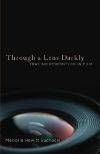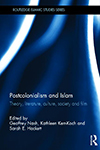- Author(s): Walid El Khachab
- When: 2013-09
- Where: Kinephanos
Theoreticians of Cinema and the Sacred, like H. Agel, tend to study the representation of the Sacred in Film. But some, like S. Brent Plate, argue that cinema is sacred by essence, because it recreates the world through narrative and editing, like a demiurge god. On the other hand, this article suggests that cinema bears the traces of the Sacred simply because the physical film—particularly during the celluloid era—and the flattening of the image projected on the screen act like sympathetic equivalents of the world. Thus, film fulfills the same sacred function as the ritual engravings on temple walls, or in prehistoric caves, such as Lascaux. In the movie theatre, as in Lascaux, the Human tends to unite with the world understood here as an expression of the Divine, whose metonymy is the mural in the cave or the screen in the theatre. Therefore, movie-going is similar to what Lacan calls “rememoration”: the Human at the movies remembers an archaic state going back to an era where the experience of the Sacred required a ritual placing the body in a dark space, facing a surface that represents the world..







